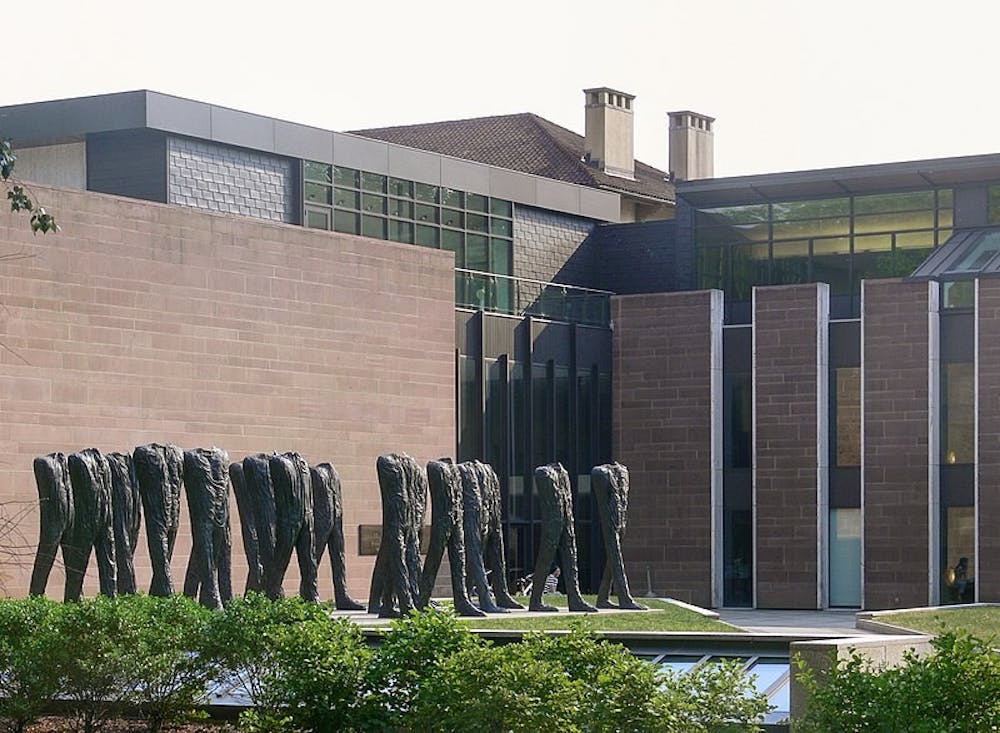This year, for the eighth in a row, the University has put up an exhibit in the Friend Center on the “Art of Science.” These exhibits display images of scientific phenomena — cells, computer simulations, chemical reactions, the like — and assign them the magnificent and ambitious classification of “art.” In a proverbial pat on the back, the curators — all scientists, no artists — claim these exhibits form a new “synergy” between art and science.
It is a cute story to tell and a good effort on the scientists’ part to explore the meaning of the arts.
But it is unjustified. These pictures are not art. More broadly, there is no “art of science.” And to say there is constitutes an insult to and assault on the special qualities of artistic pursuits.
Art is defined by the Oxford English Living Dictionaries as “the expression or application of human creative skill and imagination, typically in a visual form such as painting or sculpture, producing works to be appreciated primarily for their beauty or emotional power.”
There are several reasons why these pictures of scientific phenomena or experiments do not fit this definition.
To begin, they are not the “expression” of human creative skill. Of course, both science and art are creative pursuits. I can tell you that from experience, as a molecular biologist myself and the son of a visual artist, directly by virtue of the former and indirectly by the latter. Imaging the natural phenomena a scientist observes is not a visual expression of that creativity. It is a picture of nature, utterly devoid of the human element.
Neither are photographs of science “applications” of human, creative skill. The ultimate results of scientific experimentation, be they models, graphs, or even pictures, do not leave room for human subjectivity. Rather, they reflect natural truths that necessarily exclude human expression.
Finally, science does not produce works to be appreciated for their “beauty.” Again, using Oxford’s definition, beauty is defined as “a combination of qualities, such as shape, colour, or form, that pleases the aesthetic senses, especially the sight.” No matter how much it pains me as a scientist, science is not pursued for this purpose. Rather, it is produced for its rigorous analysis, its logical conclusions, its practical applications. No matter how “beautiful” a microscope image is, if it does not prove a scientific point, it is completely useless.

Of course, some may make the claim that aesthetically pleasing images can be found in Nature. The scales of an insect may form an interesting pattern. The oil bubbles that form in an aqueous solution may adopt curious and differently sized shapes. But there is a key difference between recognizing such patterns with complex and sensitive instruments and creating those patterns ourselves with a particular intention of crafting something with aesthetic beauty.
What if the scientific image displayed does constitute a human intervention, one may ask, and not merely a photograph of Nature undisturbed? Indeed, one photograph in the “Art of Science” exhibit displays a fruit fly expressing an orange fluorescent protein, such that the Princeton University logo appears on the embryo. Aren’t scientists using the fluorescent protein to make a picture — just like artists using paint to make watercolors?
No, they are decidedly not. The scientist has made an image — true — but its subject is extremely simplistic: in this case, a literal copy of something else. As in any academic field, copying constitutes plagiarism, not creative work, let alone art. In those few works in the exhibit that are not copies like this — and they are few indeed — the subjects are extremely crude, do not go beyond superficial and instantly recognizable depictions, and thus do not provoke further thought or commentary. Perhaps if you gave a real artist a fluorescent protein, the result would be a true work of art, which expressed the views and outlook of the individual in an interesting and thought-provoking way. But that takes years of serious practice and training that, as is evident in the exhibit, the scientist simply does not have.
I am all for scientists having an artistic appreciation. Art and science, in their own ways, enrich our human experience. But to conflate the two is to underappreciate their unique characteristics.

Gabe Lipkowitz is a senior concentrator in molecular biology. He can be reached at gel@princeton.edu.








